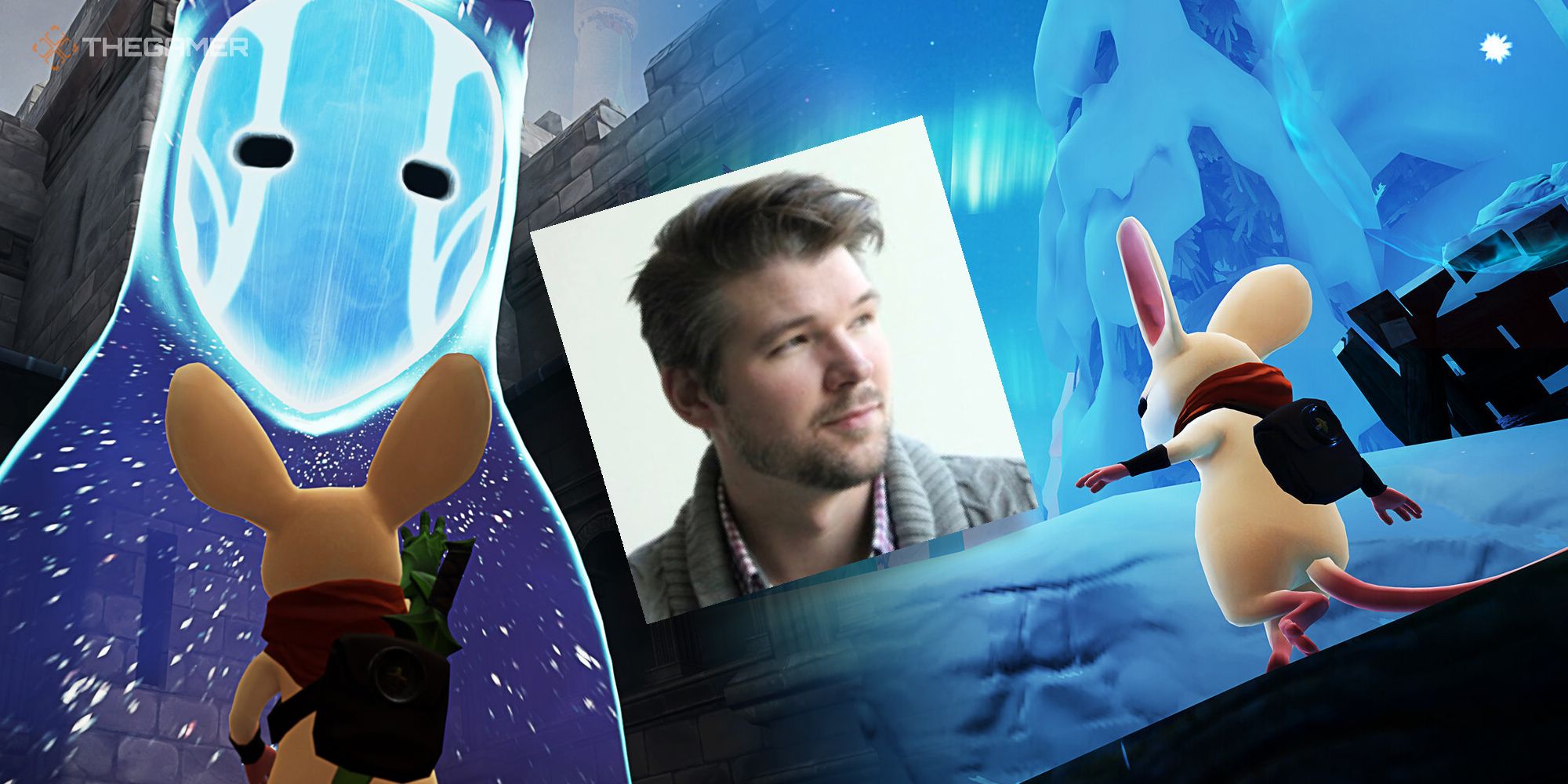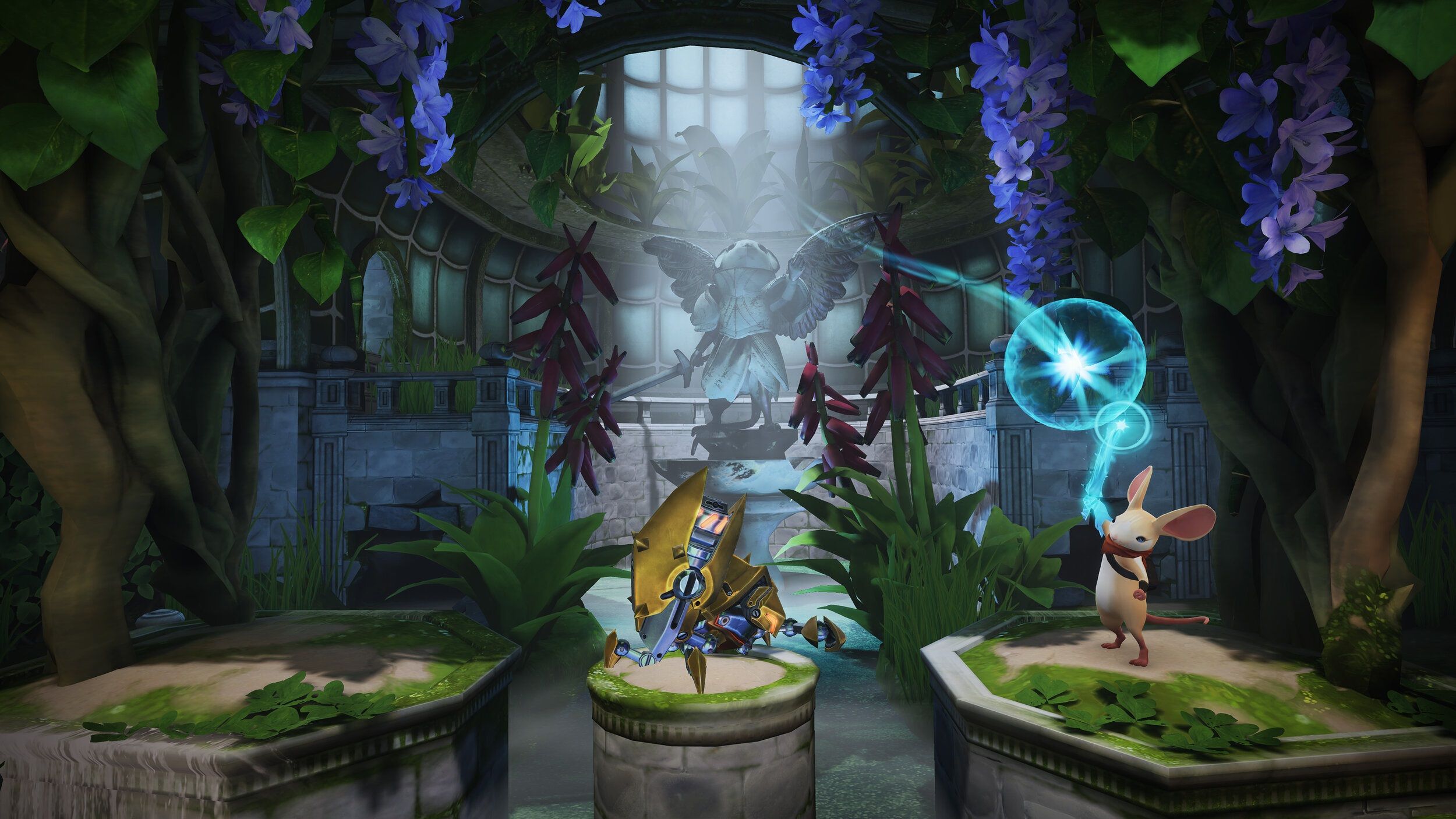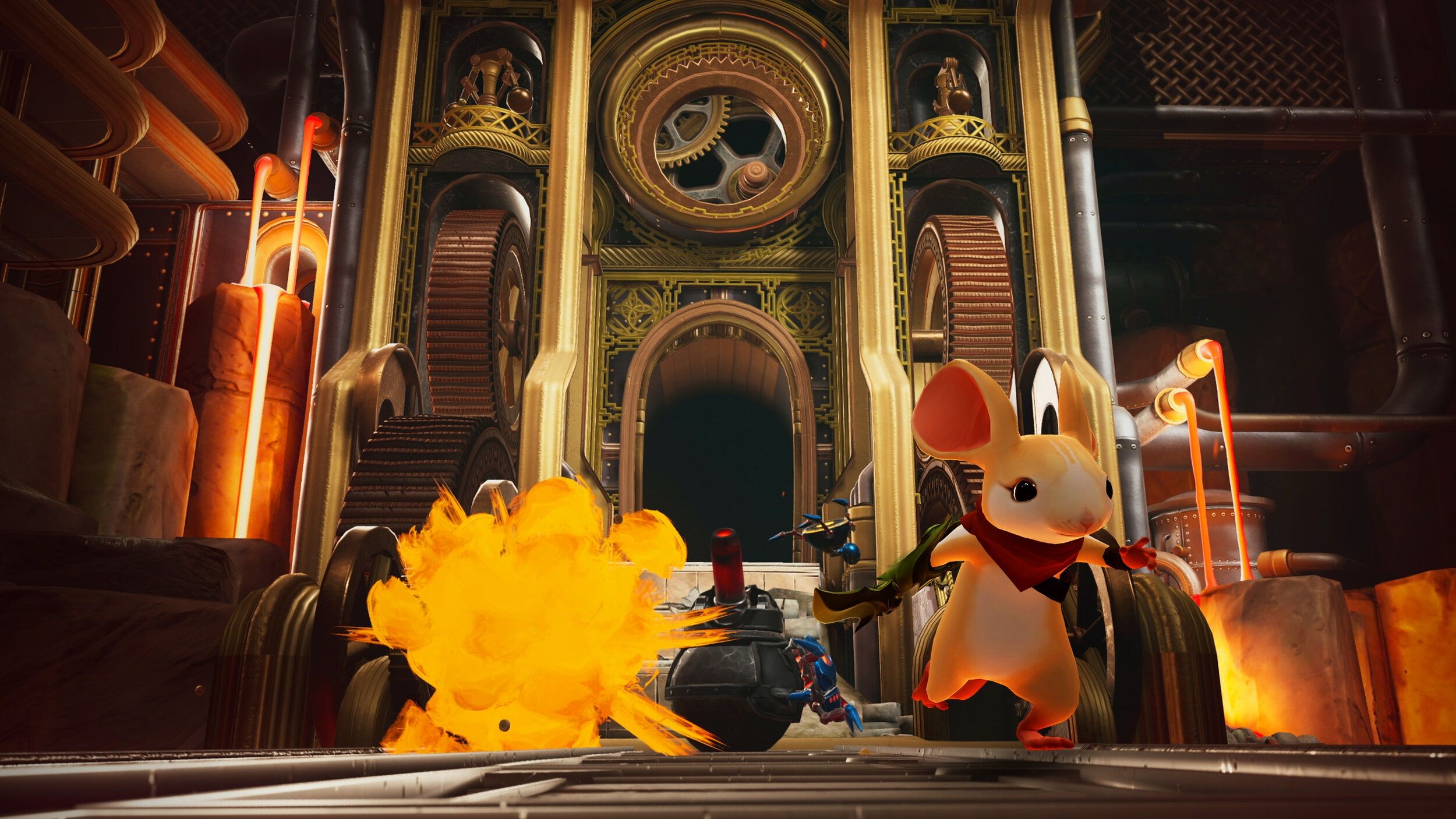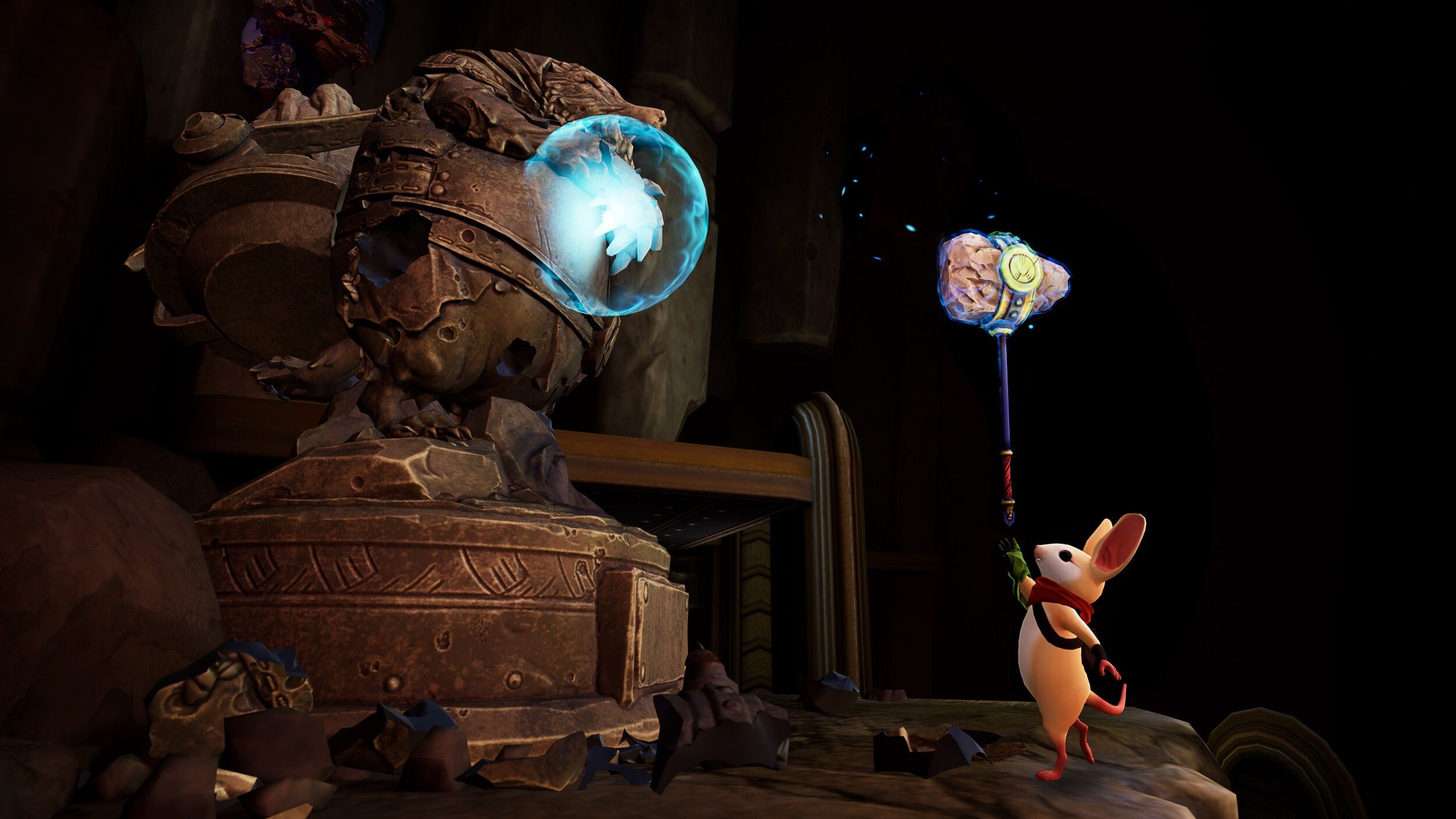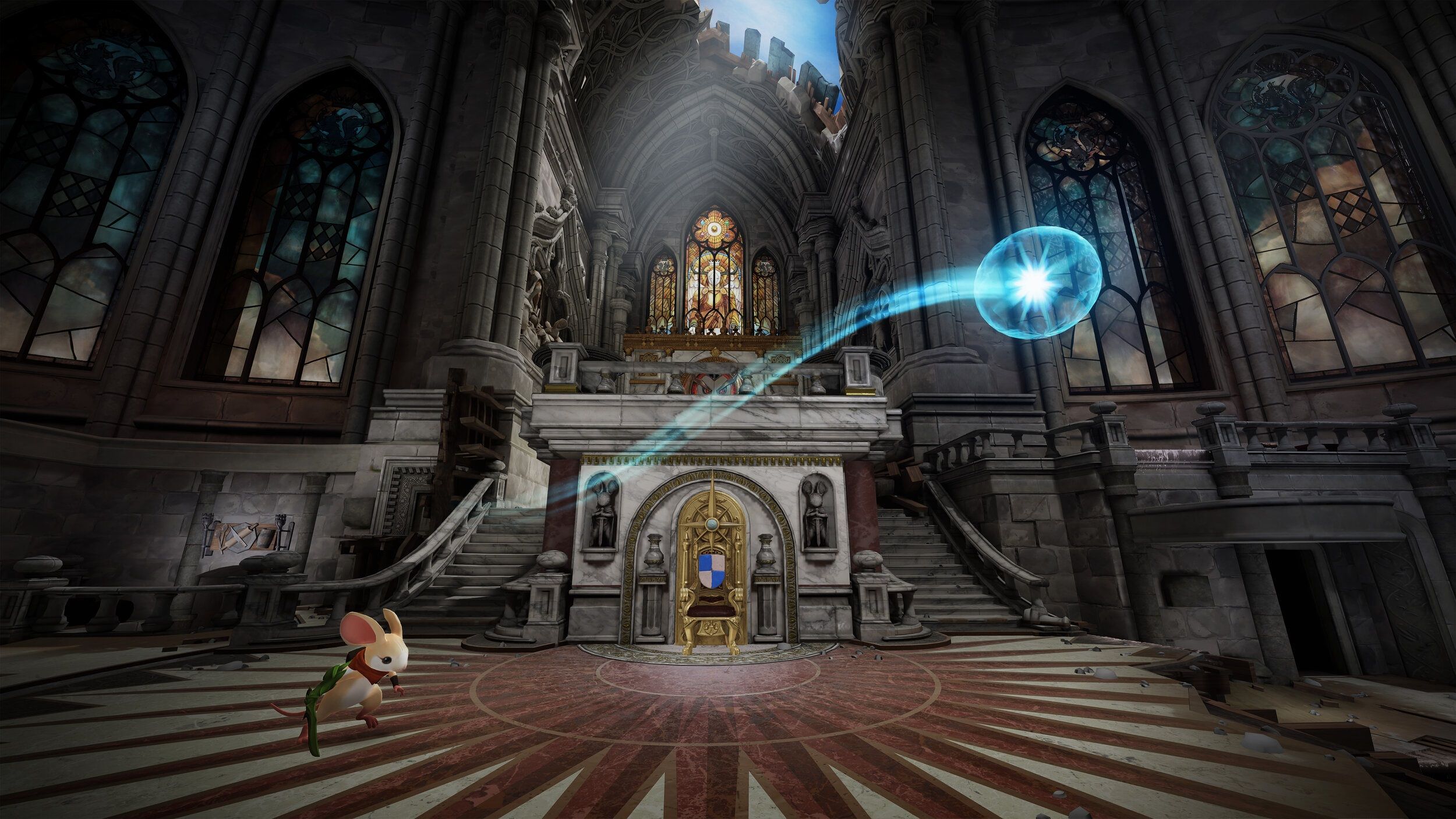“The entire way that we approached crafting the game changed when we said, ‘Hey, a pillar of this game is going to be some exploration for the player,’” Moss: Book 2 principal engineer, designer, and lead Josh Stiksma tells me. “We want them to be able to play a little bit out of order, going off the beaten path and exploring, rather than linear chapter by chapter where you can't go back at all. We had to understand what kind of story would actually work along those lines. We still have a linear story to tell because we feel like that is going to be the most impactful, and the most resonant with players in terms of ensuring that these critical story beats are received with the appropriate pacing and timing.”
Polyarc is expanding upon the beautiful world it created in Moss with the sequel, Moss: Book 2, which is set to launch for PSVR on March 31, 2022. Players will once again be teaming up with Quill as she faces a new winged threat and aims to defeat the tyrannical rule of the Arcane once and for all. While Book 2 is a direct sequel, one of the biggest changes that the team has made is that the environments you explore are interlinked, allowing players to travel back to previously visited areas to explore, hunt for collectibles, or unearth more backstory about the world.
“In a world that is more non-linear, the player has the option of ‘How fast do I go through this?’ or ‘Do I want to take a break and explore a little bit?’,” Stiksma explains. “We're not creating a giant open world, but there is a world that you can explore more than you could in the first game by deciding, ‘Hey, I want to go and search for some collectibles.’ or ‘I want to see what this is, how do I open this door? I want to figure that out. If I were to go off the path, are there other story elements that I might discover?’ And that's going to be a combination of scripted written story, but also, maybe even some passive storytelling — you look a little closer in the environment and discover what happened here. What is the story of this place?”
Polyarc has grown since the launch of Moss, which has allowed it to add certain ideas and features into Book 2 that the team had hoped to include in the first game but were unable due to limitations. In Moss, there were a few parts of the story told by flipping through the book pages rather than actually playing out the scenario yourself, despite often feeling as though they would have been a perfect action sequence opportunity. This is something that the team has worked to improve on in Book 2.
“The one thing that we did really want to do more of in the first game aside from making it bigger, which is always the case, was to have a few more of the big story moments or story beats actually take place in the game, rather than in the book,” Stiksma tells me. “And I'm really happy to say that we have quite a lot more in-game moments. Because our team did grow, not substantially, but we were able to go from one animator to two animators. So that allows more bandwidth for things like that. I'm really excited about that. In terms of other things, our general vision for the game was relatively clear from the get-go. We were intentionally trying not to go too large, but with having a little bit more flexibility, when we were thinking about what we could do for the second game, it would definitely allow us to explore a little bit more and expand a little bit more on what we did for the first game.”
In Book 2, players can expect more boss battles similar to the scale of the Sarffog final boss battle in the first game, while still including a mixture of other challenging encounters and smaller-scale boss battles. With the inclusion of new weapons and abilities, Polyarc has built upon the combat system and puzzle elements in the first game but has maintained the same level of difficulty to ensure the game isn’t too challenging.
“In terms of our players, we really want to reach a very wide audience,” Stiksma explains. “[It] doesn't necessarily need to have its challenge and difficulty come from dexterity, or pressing the buttons faster than somebody else can press. What we feel the difficulty can come from is figuring out: ‘how do I progress? What am I supposed to do here?’ and once the player formulates that plan, the execution isn't overly difficult. So with us following that as a mantra, I'm hoping that the difficulty level is equal [to the first game].
“We're trying to be very mindful to not have those speed bumps that are incredibly difficult for players because not everybody is playing this game for a high-level combat experience. Not everybody is playing this game to be completely stumped by a puzzle. We're looking to accommodate a wide range of players with our difficulty.”
Unlocking new weapons will also affect what players can do in the game in previous areas, allowing them to access hidden areas or sections that they were previously unable to in a similar vein to that of the Zelda games, which Stiksma refers to as “a permanent reference for every game I'll work on”. He also promises that there will be new ways for players to interact with Quill, but didn’t give any specifics in order to avoid spoilers.
In addition to a growing team, since Moss launched, there have been numerous improvements to VR technology and this enabled Polyarc to push the boundaries of what it was able to do for the sequel and the team is already contemplating the possibilities of what they could achieve with the PSVR 2.
“There's a bit of a salivating thing going on where you look at this new tech and you cannot wait for it,” Stiksma says. “But we're in that middle ground where that stuff is on the horizon and the best thing that we can do is make something as best as we can on the existing hardware.
“I think one of the things that we're trying our best to do is understand the constraints of the existing platforms that we're launching on. So for us, it means looking at specifically PSVR, and understanding what's workable, what can we do to really play to the strengths of this platform? A lot of our focus has been looking at how do we improve what we can do with the existing tech and keeping in our back pocket some cool things that we could see that we could do with this future technology that we're really excited about. But for the most part, our focus has been on how we make it amazing and feel really well crafted for the existing PSVR Hardware.”
Much like with Moss, there were still plenty of ideas that the team didn’t get to use for Book 2 that could be applied to any potential sequel. Stiksma explains that there is more closure to the ending of Moss: Book 2, but that it doesn’t rule out the possibility of a Book 3, “If people will continue to want them, Polyarc is more than happy to continue to create them. So we don't want to close any book permanently.
“We had a lot of stuff that we really wanted to do. With VR, there's so much experimentation, trying things out and seeing what's gonna stick, and then maybe it sticks, but there's no way you can finish that in time. So there's a lot of stuff that we're excited about and we say to ourselves, maybe the next game, maybe that's something we can release later on, or maybe when new hardware comes out and it becomes way more feasible for us to do this.”

